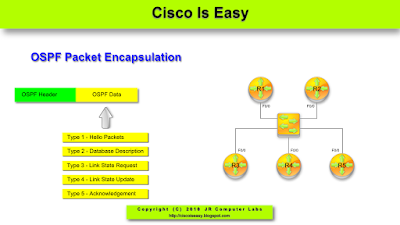Lesson 23 - Introduction to Rapid STP (802.1w)
Lesson 23 - Introduction to Rapid STP (802.1w)
Good news is that if you have learned 802.1d protocol (STP standard), only few things change in terms of the terminology and operation in the Rapid Spanning-Tree Protocol. RSTP is clearly an evolution of the regular STP but definitely NOT the revolution. The three phases of operation mentioned in lesson 20 still apply.
This post is going to be the last in the series on Spanning-Tree Protocol fundamentals.
Let's focus on the major changes introduced in RSTP by comparing it to the standard STP.
Icons designed by: Andrzej Szoblik - http://www.newo.pl
An alternate port is a port that is in a blocking state and receives superior (better) BPDU frames from another switch. The port F0/2 of SW2 is the example of alternate port.
Understanding the nuts and bolts of the RSTP operation is beyond the scope of this tutorial. All you need to know at this stage is the terminology and benefits of using it over a legacy STP. The major advantage of RSTP is that switches use BPDU frames differently than before. Ports, upon first connection or when topology changes, exchange BPDUs with proposal/agreement flags set helping achieve fast transition to the appropriate state. They negotiate whether the port should be the designated, non-designated or root port role. If the port becomes the root port, all other ports begin negotiation by exchanging proposal/agreement BPDUs since the path towards the root bridge is different. It is extremely fast mechanism that speeds up the convergence upon a topology change.
A few other changes implemented in RSTP you must be aware of are as follows.
The configuration of RSTP is pretty straightforward.
That is it!
Deterministic election of the root bridge and all the jazz related to it explained in the previous lesson are identical.
If you want to learn more on RSTP operation google it by using this query:
understanding rstp. You'll find a plethora of documents out there.
This post is going to be the last in the series on Spanning-Tree Protocol fundamentals.
Let's focus on the major changes introduced in RSTP by comparing it to the standard STP.
- STP Port States: "disabled", "blocking", "listening" are renamed to DISCARDING in RSTP. As far as the "forwarding" state, the name remains unchanged.
- STP Port Roles: designated and root roles are still the same. But the non-designated role has been split in two new ones: ALTERNATE and BACKUP roles in RSTP.
Pic. 1 - Rapid STP Alternate Port.
An alternate port is a port that is in a blocking state and receives superior (better) BPDU frames from another switch. The port F0/2 of SW2 is the example of alternate port.
Pic. 2 - Rapid STP Backup Port.
Icons designed by: Andrzej Szoblik - http://www.newo.pl
A backup port is a port in the blocking state that receives superior BPDU frames from the same switch like shown in Pic. 2. The port F0/3 of SW3 is the example of backup port.
Cisco STP Enhancement such as: spanning-tree uplinkfast and spanning-tree backbonefast are no longer used (except for spanning-tree portfast which Cisco still maintain in the IOS as an edge port). They have been replaced with negotiations of the port state that is based on the previously unused flags in the BPDU frame and a different mechanism of sending BPDU frames. The flags are shown below (pic. 3).
Pic. 3 - BPDU Flags.
A few other changes implemented in RSTP you must be aware of are as follows.
- All switches exchange BPDUs instead of relaying them after they have received them from the root bridge. BPDUs have become a true keepalive mechanism. The switches do not have to wait for the root bridge to notify them about topology change that occurred somewhere in the network. A switch that detects change notifies its neighbors about it. And those in turn, notify their neighbors immediately. It is a mechanism similar to OSPF updates in that respect.
- RSTP is backward compatible with STP (802.1d) speaking switches. Upon receiving BPDU version 1 (802.1d), the port transitions to the legacy STP protocol. All timers (max_age, forward_delay) are used according to the STP specifications (802.1d).
- Edge Port - which is something you are already familiar with. It is the port that is the candidate for a quick transition to forwarding state as it connects device that cannot create the loop (no BPDUs received on that port). Cisco enables Edge Port capability by using spanning-tree portfast feature described in the previous lesson. The ports must be a point-to-point link type (full duplex).
- Link Type - the type of the link is derived from the duplex of the port:
- Full Duplex = Point-to-Point link
- Half Duplex = Shared link
The configuration of RSTP is pretty straightforward.
SW(config)#spanning-tree mode rapid-pvst
That is it!
Deterministic election of the root bridge and all the jazz related to it explained in the previous lesson are identical.
If you want to learn more on RSTP operation google it by using this query:
understanding rstp. You'll find a plethora of documents out there.





Comments
Post a Comment